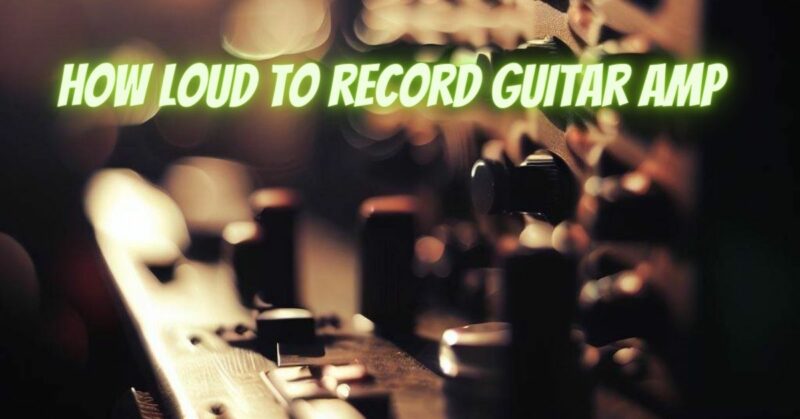Recording a guitar amp presents a unique challenge for musicians and audio engineers alike. Achieving the right balance between volume and tone is crucial to capturing the best guitar sound. Recording too loud can result in distorted or harsh tones, while recording too softly may lack the desired warmth and character. In this article, we will explore the importance of finding the optimal recording volume for a guitar amp to achieve a professional and pleasing guitar tone.
The Importance of Recording Volume:
The volume at which you record a guitar amp significantly impacts the final tone and the quality of your recording. The interaction between the guitar, the amp, and the room can be delicate, and getting it right is vital to capturing the nuances of your playing.
Distorted vs. Clean Tones:
Recording a guitar amp at higher volumes can lead to natural tube amp distortion, which might be desirable for certain genres like rock or blues. On the other hand, recording at lower volumes can result in a cleaner and more articulate tone, suitable for genres like jazz or country. Understanding the tone you want to achieve is the first step in determining the appropriate recording volume.
Balancing Volume and Room Acoustics:
The room in which you record can also influence the final sound. If the volume is too loud for the room size, it can create undesirable resonances or reflections, affecting the overall clarity of the recording. Experiment with positioning the amp in different parts of the room and adjusting the volume to find the sweet spot that minimizes unwanted room effects.
Tips for Finding the Sweet Spot:
- Start at Moderate Volume: Begin by setting the amp’s volume to a moderate level and adjust the tone controls to get a balanced sound. This will serve as a baseline for further adjustments.
- Listen for Distortion: Gradually increase the volume while monitoring the recording. Listen for any unwanted distortion or harshness in the sound. If the tone starts to break up too much, dial back the volume until you achieve a cleaner tone.
- Experiment with Mic Placement: Mic placement can also affect the recorded sound. Move the microphone closer or farther from the amp’s speaker to find the best balance between direct sound and room ambiance.
- Capture Multiple Takes: Record multiple takes at different volume levels. This will allow you to compare the results and choose the one that best suits the desired tone and style of the song.
- Utilize Attenuators or Load Boxes: If you want the tonal benefits of cranking your amp but without excessive volume, consider using an attenuator or load box. These devices allow you to reduce the output volume while maintaining the desired amp tone.
Finding the right recording volume for a guitar amp is a delicate balance between achieving the desired tone and avoiding unwanted distortion or room effects. Experimentation is key to finding the sweet spot that best suits your musical style and the requirements of the recording. Listen critically and make adjustments as needed to capture the perfect guitar tone that will elevate your recordings and make your music shine.


